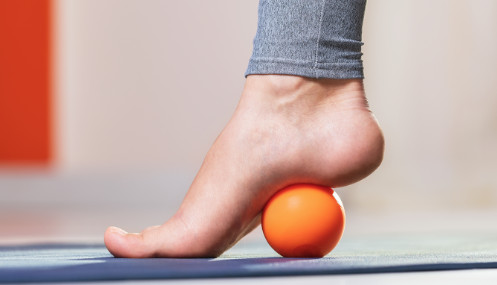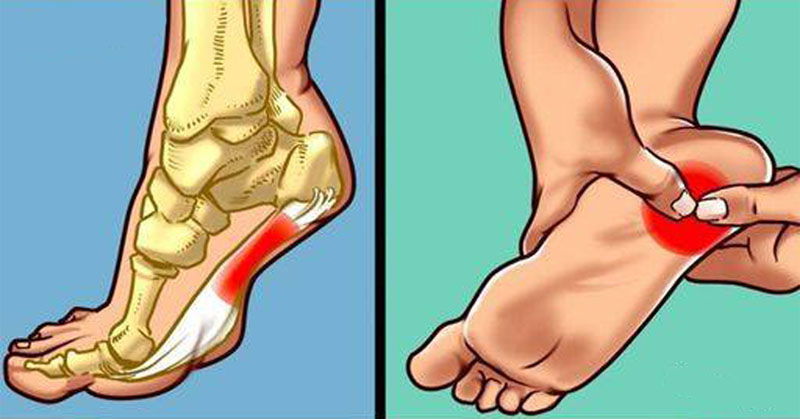Understanding and Managing Plantar Fasciitis: Essential Exercises for Relief
Plantar fasciitis is a prevalent ailment that affects countless individuals, leading to significant discomfort in the heel area. This condition arises from inflammation of the plantar fascia, a robust band of tissue that connects the heel bone to the toes and supports the arch of the foot. Those suffering from plantar fasciitis often experience sharp pain, especially with the initial steps taken in the morning or after prolonged periods of inactivity. Fortunately, there are various exercises that can help alleviate this pain, reduce inflammation, and promote healing. In this article, we will explore several effective exercises tailored specifically for managing plantar fasciitis.

1. The Towel Stretch: Enhancing Foot Flexibility
The towel stretch is a simple yet effective exercise designed to enhance flexibility and relieve tension in the foot. To perform this stretch, follow these steps:

Begin by sitting on the floor with your legs extended straight in front of you. Use a towel or a belt and wrap it around the ball of the foot that is affected by plantar fasciitis. Gently pull the towel towards you while keeping your knee straight until you feel a satisfying stretch along the bottom of your foot and calf. It’s crucial to hold this position for about 15-30 seconds and repeat the stretch two to three times. This exercise can significantly aid in improving overall foot flexibility, which is essential for reducing pain associated with plantar fasciitis.

2. Calf Stretches: Reducing Strain on the Plantar Fascia
Tight calf muscles can contribute to the development of plantar fasciitis, as they can exert additional pressure on the plantar fascia. Regular calf stretches can help alleviate this strain and are straightforward to perform:
Stand facing a wall, placing your hands against it for balance. Position one foot ahead of the other, ensuring both heels remain grounded. Gently bend your front knee while keeping the back leg straight, pressing the heel of your back foot firmly into the ground. Hold this position for 15-30 seconds, then switch legs. Aim to repeat this stretch two to three times for each leg. By incorporating calf stretches into your routine, you can effectively relieve tension that exacerbates plantar fasciitis symptoms.
3. Targeting the Plantar Fascia Directly
A highly beneficial exercise that specifically targets the plantar fascia involves stretching it directly to relieve tension and discomfort:
To do this, sit comfortably in a chair and cross one foot over the opposite knee. Using your hand, grasp the toes of the affected foot and gently pull them towards you. This action stretches the bottom of the foot and the plantar fascia effectively. Maintain this stretch for 15-30 seconds, repeating it two to three times for each foot. This exercise not only provides immediate relief but also helps in improving the overall elasticity of the plantar fascia.
4. Massage with a Ball: Easing Tension
Utilizing a tennis ball or a frozen water bottle can be an excellent method for massaging and stretching the plantar fascia, offering a reprieve from pain and inflammation:
Sit in a chair and position a ball (such as a tennis ball, golf ball, or even a frozen water bottle) under the arch of your foot. Roll the ball back and forth under your foot, concentrating on any areas of tightness or discomfort. Aim to do this for 1-2 minutes at a time, several times throughout the day. This self-massage technique can significantly alleviate pain and improve circulation in the affected area.
5. Strengthening Exercises: Toe Taps and More
Strengthening the muscles in your feet is crucial for supporting the plantar fascia and mitigating pain over time. One effective exercise for this purpose is the toe tap:
Sit comfortably in a chair with your feet flat on the floor. Lift your toes towards your shin while keeping your heel firmly planted on the ground. Hold this position for a few seconds, then relax. Repeat this movement for about 10-15 repetitions, performing 2-3 sets. Additionally, the foot flex and point exercise involves flexing your foot by pulling your toes towards your shin and holding it for five seconds, followed by pointing your toes downward for another five seconds. Repeat this for 10-15 repetitions to enhance the strength and flexibility of your feet.
6. Ankle Mobility: Circles and Flexibility
Improving ankle mobility can also play a significant role in alleviating strain on the plantar fascia. Ankle circles are an excellent way to enhance this mobility:
Sit or lie down with one leg extended. Rotate your ankle in a circular motion, completing 10 circles clockwise followed by 10 circles counterclockwise. Ensure to repeat this exercise with the other foot. This simple movement increases flexibility and reduces tension around the ankle joint, thereby benefiting the plantar fascia.
When to Seek Professional Guidance
While these exercises can provide significant relief, it’s essential to consult a healthcare professional or a physical therapist if your plantar fasciitis pain persists or worsens. They can offer tailored treatments, including custom orthotics, night splints, or corticosteroid injections if necessary.
Preventive Measures: Keeping Plantar Fasciitis at Bay
Prevention is always better than cure. Here are some tips to help avoid the onset of plantar fasciitis:
Invest in supportive footwear that offers ample arch support. Avoid walking barefoot on hard surfaces, as this can exacerbate foot strain. Incorporate regular stretching for your calves and feet both before and after any physical activity. Lastly, maintaining a healthy weight can significantly reduce the strain placed on your feet.
Conclusion: Managing Plantar Fasciitis Effectively
By consistently integrating these exercises into your daily routine, you can effectively manage and alleviate the symptoms of plantar fasciitis. These stretches and strengthening exercises not only provide immediate relief but also play a crucial role in preventing the condition from recurring. If you found this article informative, don’t hesitate to share, like, or follow for more insights and advice on managing common health concerns such as plantar fasciitis.














